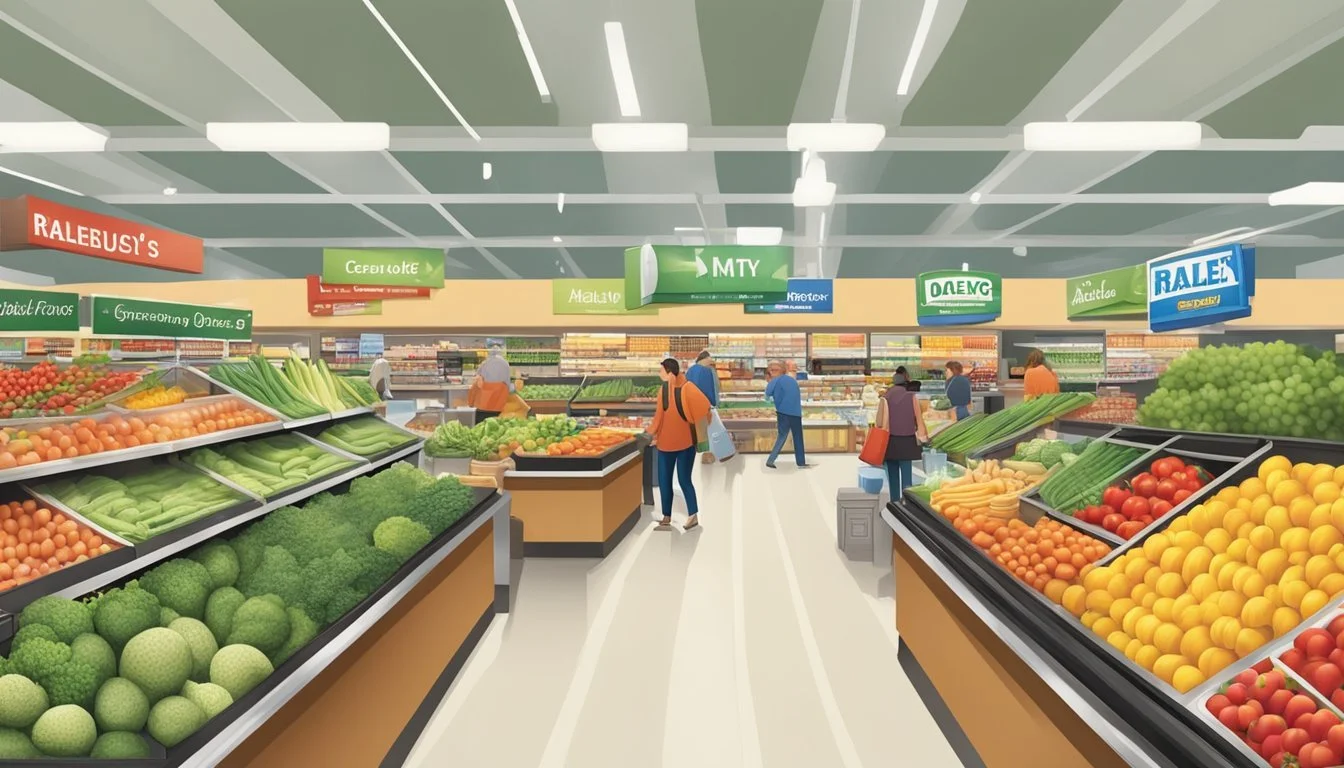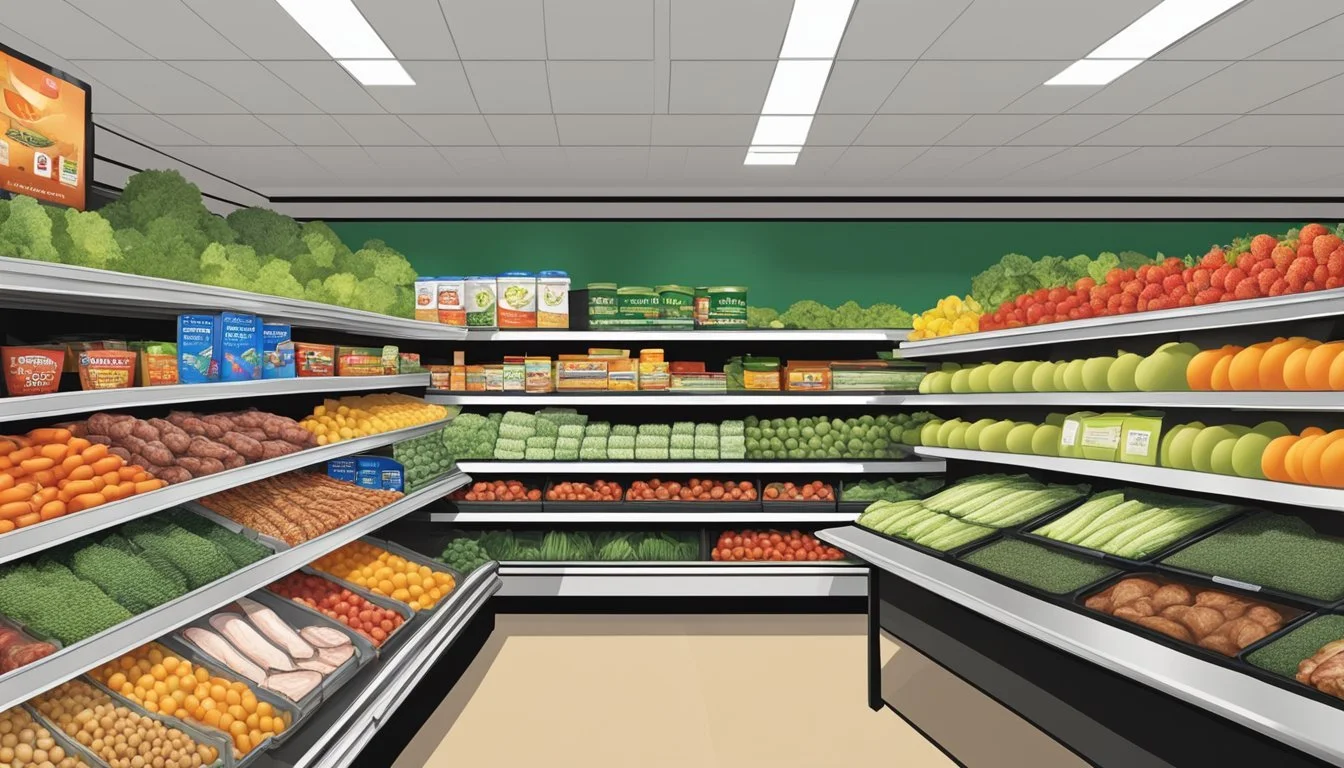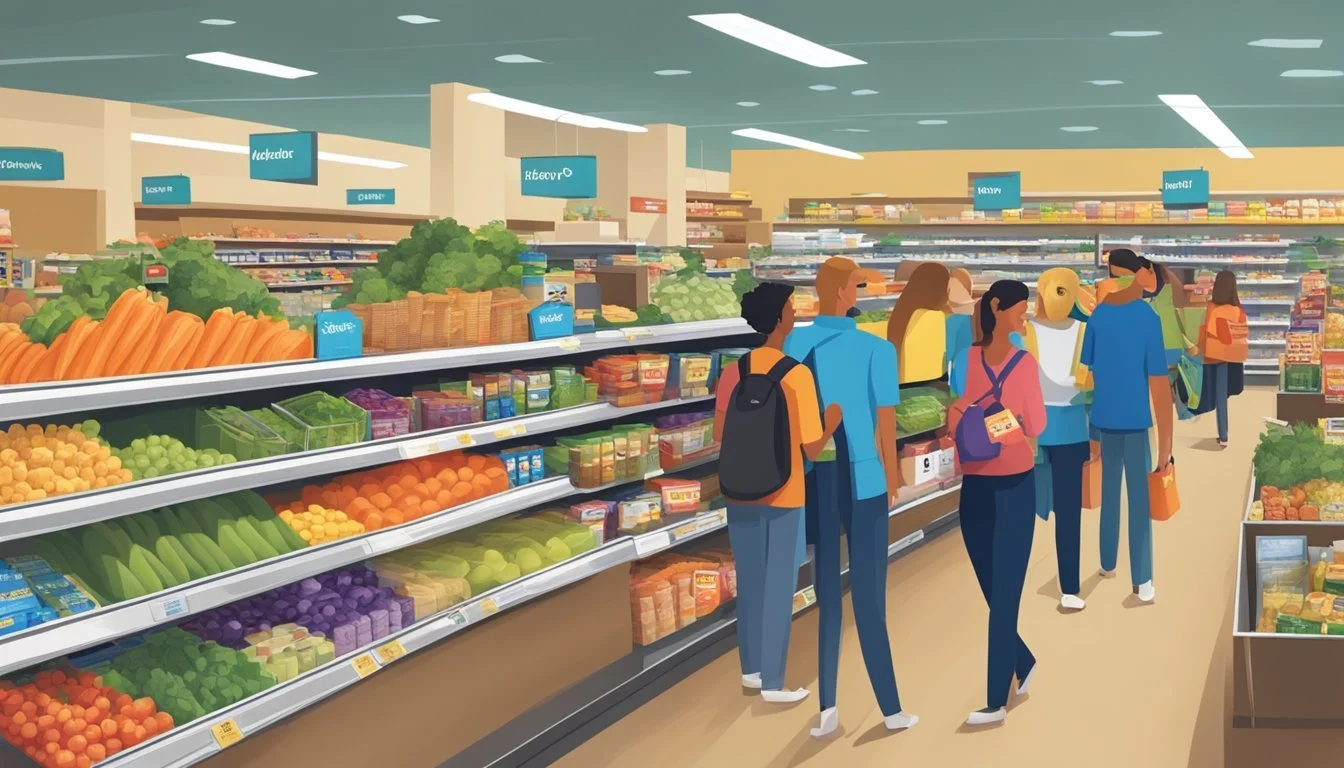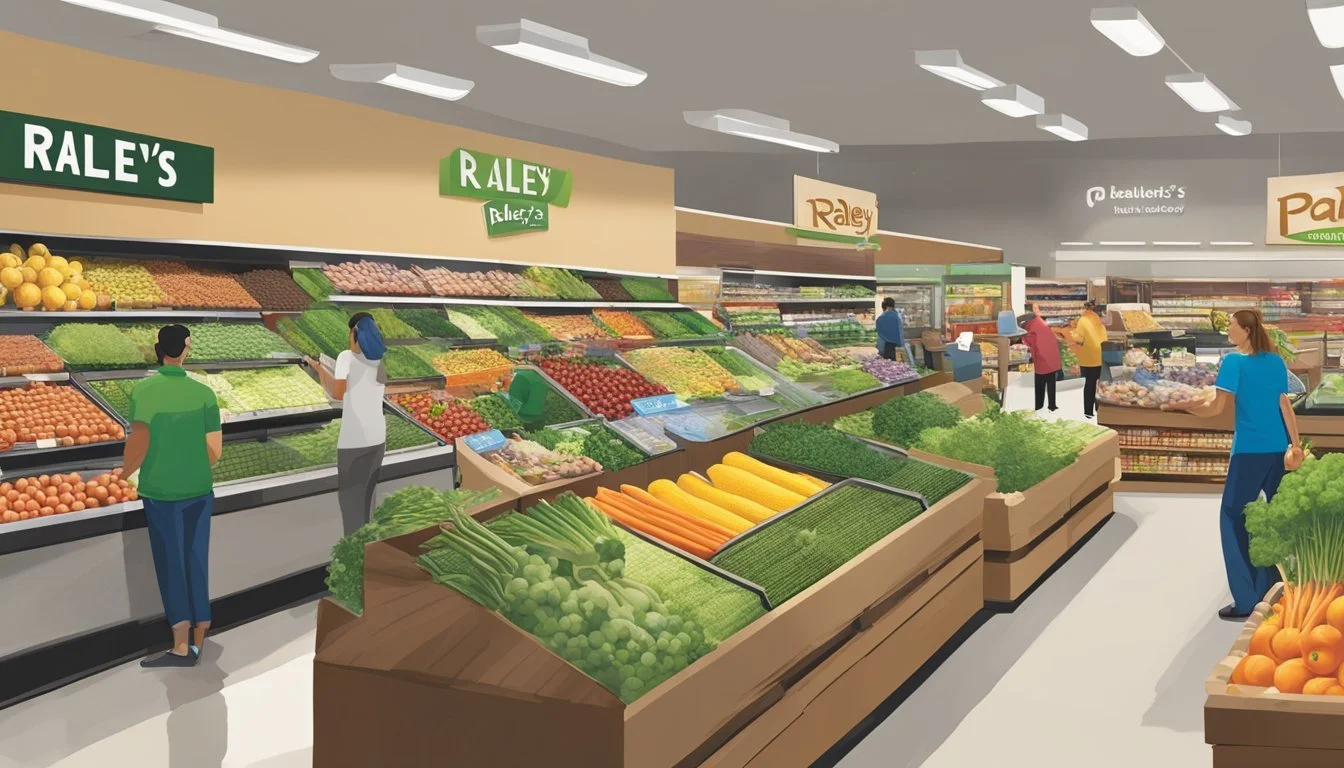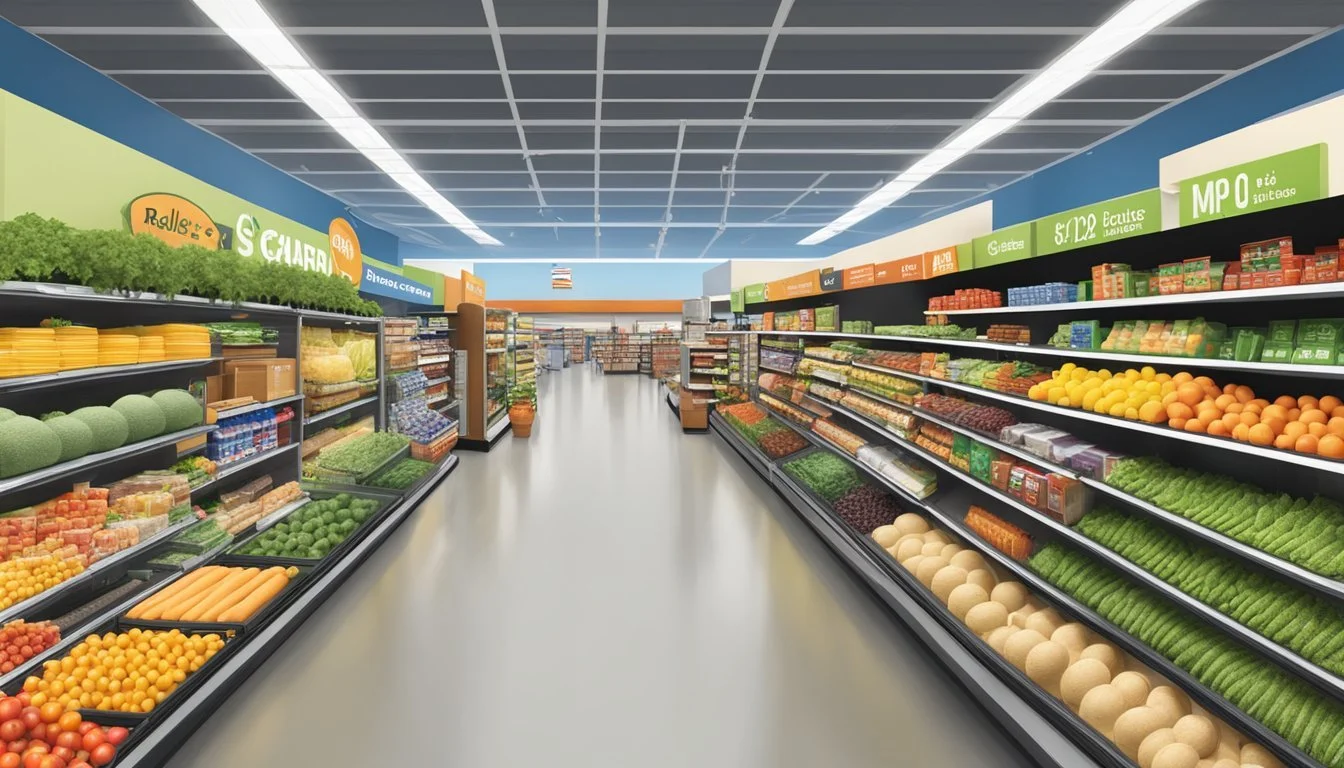Raley's vs Walmart
A Comprehensive Comparison of Price, Quality, and Service
Grocery shopping is a regular necessity for most households, and choosing the right store can impact both your budget and dining experiences. Two popular options, Raley's and Walmart, offer distinct shopping experiences and pricing strategies.
For overall value, Walmart typically offers lower prices on groceries compared to Raley's. A recent analysis found that a standard basket of grocery items at Walmart cost $119.44, making it the best overall value among several major chains. This pricing advantage can lead to significant savings for families who spend $250 or more per week on groceries.
Raley's, on the other hand, has a rich history in the supermarket industry. Founded by Tom Raley, the company has grown from a single store to a respected regional chain. While Raley's may not compete directly with Walmart on price, it often focuses on providing a different shopping experience with an emphasis on quality and customer service.
Company Profiles
Raley's and Walmart are major players in the grocery retail sector, each with unique histories and growth trajectories. Both companies have expanded their footprints and offerings over the years, catering to diverse customer needs.
History and Expansion of Raley's
Raley's was founded in 1935 by Thomas P. Raley in Placerville, California. The company began as a single store and gradually expanded throughout Northern California and Nevada. By the 1970s, Raley's had established itself as a regional powerhouse in the grocery industry.
In the 1990s and 2000s, Raley's acquired several smaller chains, including Bel Air Markets and Nob Hill Foods. These acquisitions strengthened its presence in key markets. The company has focused on providing high-quality products and exceptional customer service.
Raley's has embraced innovation, introducing concepts like the Raley's loyalty program and expanding its organic and natural food offerings. In recent years, the company has also invested in e-commerce capabilities to meet changing consumer preferences.
Walmart's Rise in the Grocery Sector
Walmart entered the grocery business in 1988 with the opening of its first Supercenter in Washington, Missouri. This move marked a significant shift in the company's strategy, combining general merchandise with a full-service supermarket.
Throughout the 1990s and 2000s, Walmart rapidly expanded its grocery operations across the United States. The company leveraged its vast distribution network and purchasing power to offer competitive prices on a wide range of products.
Walmart's scale allowed it to become the largest grocer in the United States by revenue. The company has continued to innovate, introducing services like online grocery ordering and curbside pickup. Walmart has also invested in private label brands and expanded its organic offerings to appeal to a broader customer base.
Product Assortment and Quality
Raley's and Walmart offer distinct product ranges and quality levels. Raley's emphasizes fresh, high-quality items, while Walmart focuses on variety and affordability. Their approaches to produce, meat, and organic offerings differ significantly.
Raley's Fresh Produce and Meat Quality
Raley's prides itself on superior produce and meat. Their fruits and vegetables are often locally sourced, ensuring freshness and supporting regional farmers. The produce section features a wide array of seasonal items and specialty fruits.
Raley's meat department is known for its high standards. They offer prime cuts, grass-fed options, and sustainably sourced seafood. The butchers provide custom cuts and expert advice.
Many customers praise Raley's for consistently delivering fresh, flavorful produce and meat. The store's commitment to quality is evident in their careful selection and presentation of these key departments.
Walmart's Grocery Selection
Walmart boasts an extensive grocery selection at competitive prices. Their produce section offers a wide range of fruits and vegetables, though quality can vary by location.
The meat department provides affordable options, including pre-packaged cuts and family-size portions. Walmart carries popular brands and their own Great Value line.
Walmart's vast selection extends to pantry staples, frozen foods, and international items. They stock a variety of brands at different price points, catering to budget-conscious shoppers.
• Extensive selection of national brands • Great Value private label products • Large frozen food section • Diverse international food aisle
Organic Offerings Comparison
Raley's has a strong focus on organic products. They offer a wide range of organic produce, meats, dairy, and pantry items. Many of these are prominently displayed and clearly labeled.
Walmart has expanded its organic offerings in recent years. Their organic section includes produce, dairy, and packaged goods. The selection is growing but may not be as extensive as Raley's.
Price-wise, Walmart's organic items are often more affordable. However, Raley's organic selection tends to be more diverse and of higher perceived quality.
Both stores carry popular organic brands, but Raley's is more likely to feature local and specialty organic products. Walmart's organic options cater to customers seeking more affordable alternatives to conventional items.
Pricing and Value
Walmart and Raley's employ distinct pricing strategies that impact shoppers' wallets differently. Both stores offer opportunities for savings, but their approaches vary in terms of everyday prices, promotions, and overall value.
Analyzing Every Day Low Prices at Walmart
Walmart's pricing strategy revolves around its "Every Day Low Price" promise. The retail giant leverages its massive purchasing power to negotiate lower costs from suppliers, passing savings to customers. Walmart consistently offers lower prices on staple items like milk, bread, and eggs compared to many competitors. Their store-brand "Great Value" products provide even deeper discounts, often 10-30% cheaper than name-brand equivalents.
Walmart's pricing extends beyond groceries. Their diverse inventory allows for competitive pricing on household goods, electronics, and clothing. This one-stop-shop approach can lead to additional savings for customers who consolidate their shopping trips.
Raley's Pricing Strategy
Raley's takes a different approach to pricing. While not always the cheapest option, Raley's focuses on providing value through quality products and customer service. Their prices tend to be higher than Walmart's, particularly on national brands. However, Raley's offers frequent sales and promotions to offset higher everyday prices.
Raley's "Something Extra" loyalty program provides personalized discounts based on shopping habits. Members earn points on purchases, redeemable for future savings. The store also features weekly specials and digital coupons to help budget-conscious shoppers save.
Comparison of Savings Opportunities
Both stores offer distinct ways to save money. Walmart's consistently low prices benefit shoppers who prefer straightforward pricing without the need to hunt for deals. Their Savings Catcher program automatically refunds the difference if a local competitor advertises a lower price on eligible items.
Raley's savings require more active participation from shoppers. Combining weekly ad specials, digital coupons, and loyalty program discounts can lead to significant savings. Raley's also offers price matching on identical items from major competitors, including Walmart.
For shoppers prioritizing the lowest possible prices, Walmart generally comes out ahead. Those willing to put in extra effort with coupons and promotions may find competitive deals at Raley's, especially when factoring in product quality and shopping experience.
Customer Experience
Raley's and Walmart offer distinct shopping experiences, each with its own strengths and weaknesses. Their approaches to store design, checkout processes, and customer service significantly impact consumer satisfaction.
Store Layout and Design
Raley's stores typically feature a more upscale and inviting atmosphere. The aisles are often wider, with better lighting and cleaner appearances. Products are arranged logically, making it easier for shoppers to find what they need.
Walmart, in contrast, focuses on a no-frills approach. Their stores are larger, with a vast selection of items beyond groceries. The layout can be overwhelming for some customers, but others appreciate the one-stop-shop convenience.
Both chains prioritize convenience, but in different ways. Raley's emphasizes a pleasant shopping environment, while Walmart aims for comprehensive product availability under one roof.
Checkout Efficiencies and Service
Raley's generally provides a more personalized checkout experience. They often have shorter lines and more staff available to assist customers. Many locations offer both traditional and self-checkout options.
Walmart is known for its efficiency-focused approach. They typically have numerous self-checkout kiosks alongside traditional lanes. During peak hours, lines can be longer, but the sheer number of checkouts helps manage the flow.
Wait times can vary at both stores depending on location and time of day. Raley's tends to have more consistent service levels, while Walmart's large stores can sometimes lead to longer waits during busy periods.
Consumer Ratings and Feedback
Customer surveys and online reviews generally rate Raley's higher for overall shopping experience. Shoppers appreciate the cleaner stores, friendly staff, and quality of products, especially in the produce and meat departments.
Walmart receives mixed feedback. Many customers value the low prices and wide selection. However, some report issues with long checkout lines and less attentive customer service.
Raley's strengths:
Friendly staff
Clean stores
Quality produce
Walmart strengths:
Low prices
Wide product range
Convenient locations
Both stores have loyal customer bases. Raley's attracts those who prioritize quality and service, while Walmart appeals to budget-conscious shoppers seeking variety.
Brand Reputation and Market Presence
Walmart and Raley's have distinct brand reputations and market positions in the grocery industry. Their influence and public perception shape customer loyalty and shopping preferences.
Market Influence of Walmart and Raley's
Walmart dominates the grocery market with its extensive reach and low-price strategy. The retail giant operates over 4,700 stores in the United States, making it accessible to a vast majority of consumers. Walmart's buying power allows it to offer competitive prices, attracting budget-conscious shoppers.
Raley's, a regional chain, focuses on the Western United States with approximately 120 stores. The company emphasizes quality products and customer service. Raley's operates under several banners, including Nob Hill Foods, strengthening its regional presence.
Public Perception and Loyal Following
Walmart's reputation centers on affordability and convenience. The company consistently ranks high in consumer trust surveys for grocery retailers. Its wide selection and one-stop shopping experience appeal to many customers.
Raley's cultivates a more upscale image, known for fresh produce and specialty items. The company has built a loyal following among shoppers who prioritize quality and local products. Raley's community involvement and employee-friendly policies contribute to positive public perception.
Both stores have dedicated customer bases. Walmart attracts price-sensitive consumers and those seeking convenience. Raley's appeals to shoppers willing to pay more for perceived higher quality and a personalized shopping experience.
Environmental and Ethical Practices
Raley's and Walmart have different approaches to sustainability and ethical sourcing. Both companies have made efforts to improve their environmental impact and supply chain practices, though their specific initiatives and areas of focus vary.
Sustainability Commitments
Raley's has released its first-ever impact report, highlighting the company's dedication to sustainability. The family-owned grocery chain focuses on fresh products and has implemented measures to reduce food waste in its 121 stores across Northern California and Nevada. Raley's aims to cut food waste in half by 2030 through optimized operations.
Walmart has set more ambitious climate goals. The retail giant plans to achieve zero emissions across its global operations by 2040. Walmart's large scale allows it to make significant environmental impacts through its sustainability initiatives. The company has also committed to protecting and restoring millions of acres of land and oceans.
Supply Chain Transparency
Raley's emphasizes transparency in its supply chain, particularly for fresh products. The company works closely with local suppliers and prioritizes organic offerings. Raley's has implemented programs to ensure the quality and sustainability of its meat products, including grass-fed options and items free from growth hormones and antibiotics.
Walmart has faced scrutiny over its supply chain practices but has made efforts to improve transparency. The company has implemented a Sustainability Index to assess supplier performance on key environmental and social metrics. Walmart works with thousands of suppliers globally to enhance sustainability throughout its vast supply chain. The retailer has also increased its organic product offerings and set goals to source key commodities more sustainably.
Additional Services and Features
Raley's and Walmart offer various conveniences beyond basic grocery shopping. These include delivery options and rewards programs to enhance the customer experience.
Grocery Delivery Options
Raley's provides home delivery through their eCart service. Customers can order online or via mobile app for same-day delivery in many areas. Walmart offers grocery delivery through Walmart+ membership. Subscribers get unlimited free delivery on orders over $35. Both stores also have curbside pickup options for added convenience.
Walmart partners with Instacart in some regions, expanding their delivery reach. Raley's focuses on their in-house delivery service. Delivery fees and minimum order amounts vary by location for both retailers.
Membership and Rewards Programs
Walmart+ is Walmart's paid membership program. Benefits include free delivery, fuel discounts, and mobile scan-and-go shopping. The annual fee is $98. Raley's offers a free Something Extra rewards program. Members earn points on purchases for discounts and personalized deals.
Raley's program focuses on grocery-specific perks like digital coupons and recipe savings. Walmart+ provides broader benefits across departments. Neither requires a paid membership for basic shopping or rewards earning.
Conclusion and Recommendations
Raley's and Walmart each offer distinct advantages for grocery shoppers. Raley's excels in product quality, customer service, and a more upscale shopping environment. The regional chain provides a curated selection of fresh produce, meats, and specialty items.
Walmart, on the other hand, consistently delivers lower prices across a wide range of products. The retail giant's massive scale allows for significant discounts, especially on packaged goods and household essentials.
For budget-conscious shoppers, Walmart is likely the better choice. Families looking to stretch their grocery dollars can find substantial savings, particularly on non-perishable items.
Those prioritizing quality ingredients and a more personalized shopping experience may prefer Raley's. The higher prices are often offset by fresher produce and meats, along with attentive customer service.
Ultimately, the best choice depends on individual priorities and preferences. Some shoppers may opt to split their purchases, buying staples at Walmart and select premium items at Raley's.
Both stores offer online ordering and pickup options, providing convenience for busy consumers. Comparing prices and taking advantage of each store's strengths can help shoppers maximize value and satisfaction in their grocery experiences.

